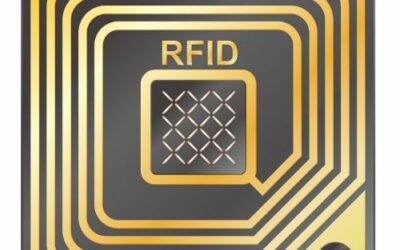If you have high-value assets, it is essential to ensure that they’re correctly tracked, monitored and updated. You need to log and update information regularly for a range of purposes, whether it’s for auditing or to ensure that assets don’t go missing.
Therefore, you need to use asset tracking operations to make sure your accountability remains high and your costs remain low.
Conventional asset tracking software usually uses QR codes and barcodes. You then use your phone’s camera to scan these tags. This can create difficulties as you can’t stick visible things onto high-value assets. This is where RFID asset management comes in.

What Is Asset Tracking?
Asset tracking is the process of logging equipment, tools, and other assets onto a system and monitoring them. In the past, a spreadsheet would’ve been used, but this can create limits and gaps in accountability, control, and transparency.
This is why asset tracking software creates an effective, robust, and clear view of what you own. With online asset tracking software, you can add unique asset profiles to your software. You can then use an integrated asset tracking app to track assets while you’re physically with them.
In other words, you will have a web portal that is available for reporting, data analysis, and overseeing operations and an app where you can scan asset tags and edit assets onsite when you notice or make changes to an asset.
The system will be cloud-based, meaning that any changes you make to the system using your app will also be reflected on your web-based system in real-time. This is great for reporting purposes, as you can report issues with an asset in front of you, then manage an exportable report of these logged issues.
RFID asset tracking then gives you more automation and control over your high-value asset tracking operations.
How Does RFID Work?
RFID systems use RFID asset tags. The purpose of these is the same as QR codes and barcodes. With all of these asset labels, you’ll be indicating that an asset is unique within your system.
Then, whenever you scan an asset’s tag in your asset tracking app, the asset’s profile will open, ready for edits. Every scan also updates the asset’s last seen location using your phone’s GPS data, too, as well as logging when the scan was made and by who. This gives you a clear audit trail for your assets.
RFID asset labels have an edge over QR codes and barcodes, however, even if they’re passive RFID tags. This is as RFID asset tags use antennas to emit radio frequencies. You can then use external hardware that you can link to your asset tracking software to pick up these radio frequencies and read the tags.
Effectively, what this means is that you can hide asset tags in a way that wouldn’t be possible with QR codes and barcodes, as QR codes and barcodes must be scanned with your phone’s camera.
There are then two types of RFID asset tracking that you can implement which both give you different levels of automation and capabilities.
Handheld RFID Asset Management
First of all, you can use handheld RFID asset management. This is very similar to how you’d use QR code asset management. You’d stick RFID asset labels onto your assets and use a handheld RFID reader to scan these.
The automation is provided by your asset tracking software’s functionality, as well as the ability to scan multiple tags quickly and from a distance.
The benefit is also clear, as you can conceal these tags which is sometimes essential, whether it be for paintings or wine collections or other high-value collections that you don’t want to add a visible tag to.
In terms of automation, if multiple assets are moving from one location to another, you’ll be able to use a Quick Add feature to log this change in your system simply by pulling the trigger on your reader. Then, you can also run audits to verify that your assets are all still where they should be, again, simply by pulling the trigger.
Fixed RFID Asset Tracking
Fixed RFID asset tracking also uses RFID tags. The benefits are slightly different here, as fixed RFID asset management allows you to log asset movements without any manual input.
For example, if you’re working in an art gallery, you’ll be able to position fixed RFID readers above certain doors. Then, whenever one of your pieces of artwork moves from one location to another, the change will be logged in your asset tracking system.
Fixed RFID readers can also detect which direction your assets are moving in, meaning they’ll be able to log whether your assets are leaving a room or moving into a room. This gives you a much higher level of transparency and accountability over your asset list.
Tracking High-Value Collections
You can apply a lot of these asset tracking processes to high-value collection tracking. While you still get the core of the system where you’re able to log and monitor your assets, you also get additional functionalities, levels of automation, and control over your asset list where it’s needed the most.
So, if you need a fixed asset register for insurance auditing purposes, you’ll still be able to create and export this. Your asset tracking software will automatically keep this up-to-date, too, as any changes you make within the system are also reflected on your fixed asset register.
You will be able to make use of a wide range of asset tracking features in your system, and your system will have been built up to ensure that you get more accountability, visibility, and control over your asset list.
Overall, whether you’re tracking artwork, wine, or equipment, you’ll be able to keep a much better eye on it using RFID.
Business Uses For RFID Fixed Asset Tracking
The core of asset management is applicable to many different use-cases. Asset tracking software isn’t built with specific industries in mind, it is built with the basics of what every single business needs to know about their assets.
Because of this, whether you’re tracking tools and equipment, implementing IT asset management, or working on construction equipment tracking, as you’re fundamentally tracking assets, your asset tracking software’s features will be able to help.
Then, there will be features on top of this that you will be able to tailor and use to your own specific use-cases, such as equipment booking software capabilities, issues and maintenance management, and more!
RFID can benefit businesses that want more accountability and more automation over their assets. One of the benefits, for example, is that if you’re in a busy environment, using RFID asset tracking means that you cut down time on your asset tracking operations. Another is that if you’re tracking small assets, such as lab equipment or small tools, you’ll be able to use RFID to detect the tools without having to find them yourself to scan the QR code.
To find out more about how itemit’s asset tracking software can help your business save time and money and help you take back control of your assets, you’ll be able to contact us at team@itemit.com. You can also fill in the form below to start your 14-day free trial.
RFID Asset Tracking Software
Choose a better way to track your assets
Start your free 14-day trial now
Instant access. No credit card details required.
Related articles
How Easy Is RFID Tracking?
Want to try RFID tracking but feeling a little anxious? Read this post now to discover just how easy it is to use an RFID aset tracking system!
How RFID Can Help You To Track Assets
How can an RFID tracking app help you to track all of your assets? Read this post now to find out so you can also track your assets with ease!
How To Get Started With RFID
How does RFID tracking work and how can you begin to get started with it? Read this article as it explains everything you need to know!



